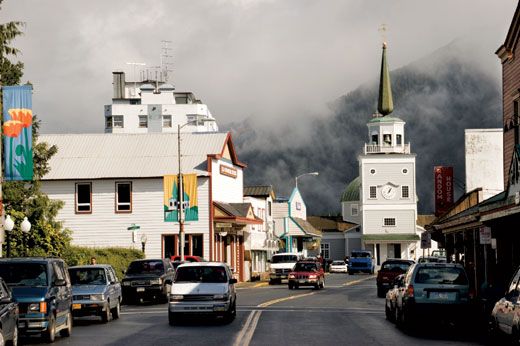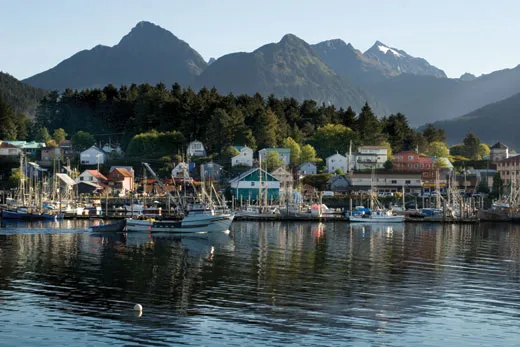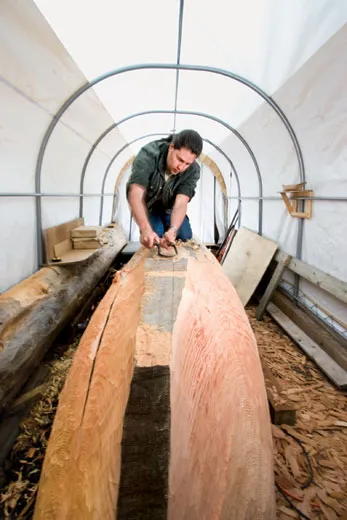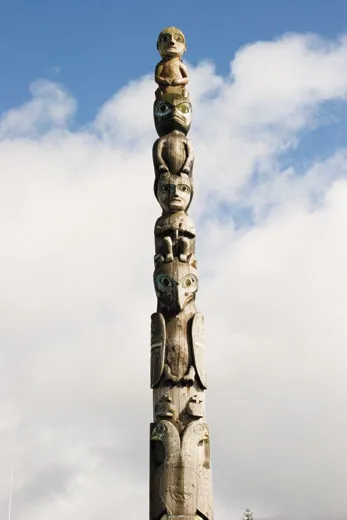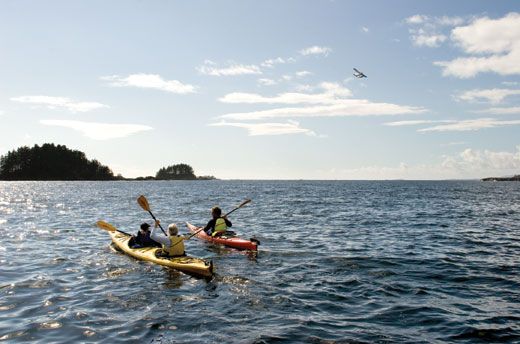Sitka
A tradition-rich village lies at the doorstep of a vast Alaskan wilderness
As I kayak into the mouth of the Indian River, just off the Pacific Coast village of Sitka, Alaska (pop. 8,900), I gaze up at a sight almost surreal: along a forested trail hugging the coastline, totem poles up to 50 feet tall—the work of Tlingit and Haida artisans—rise out of the mist. The footpath, one section of a two-mile loop, lies within 112.5-acre Sitka National Historical Park, land set aside in 1910 as Alaska’s first federal park.
An inspiring mix of natural beauty and rich tradition defines Sitka (the Tlingit name means “by the sea”), which lies on the periphery of the vast Tongass wilderness, a 17-million-acre national forest established in 1907. No roads lead here: the town, on the west side of Baranof Island, is reachable only by ferry or flights from points such as Seattle or Anchorage, or by cruise ships—although vessels must anchor off the shallow harbor.
“Cultural complexity is the real story of Sitka,” says local historian Harvey Brandt, who pointed out landmarks reflecting the region’s history as we walked through the center of town. The Russian presence here dates back to 1799, when fur traders established an outpost. “By the 1840s,” Brandt says, “Tlingit, Aleut, Alutiiq, Russian and Finnish cultures were all part of the mix.” For more than a century, the Russian Bishop’s House, at today’s Lincoln and Monastery streets, served as a residence for Russian Orthodox clergy. Castle Hill—once the location of a Russian governor’s house, which burned in 1894—was the site of the ceremony marking Alaska’s transfer to the United States in 1867. Sitka is home to 19 sites on the National Register of Historic Places.
For more than 15 years, Tlingit woodcarver Tommy Joseph has produced masterworks from his studio at the Southeast Indian Cultural Center, a complex of workshops on the grounds of Sitka National Historical Park. He has earned international renown creating 35-foot-tall totem poles, as well as hand-hewn painted masks and screens. His intention, he says, is to bring Tlingit traditions into the future. “This is not a dead art form,” he says. “I’m incorporating motifs from today, yesterday and tomorrow.”
On my last day in Sitka, I travel by water taxi (local chartered craft) to Kruzof Island, ten miles to the west, site of Mount Edgecumbe, a 3,201-foot dormant volcano. Upon arrival, I set out on a six-hour climb to the summit, gathering wild blueberries along the trail. As I reach the crater’s edge, dragonflies hover in the crystal air. I look west to the Pacific and recall what another Tlingit artisan, weaver and basketmaker Teri Rofkar, had told me the day before. “Because this is an isolated community, because there are no roads, I have real relationships with people who are not in my generation,” she said. “Our isolation—it’s a gift.”
Planning Your Next Trip?
Explore great travel deals
Smithsonian magazine participates in affiliate link advertising programs. If you purchase an item through these links, we receive a commission.
